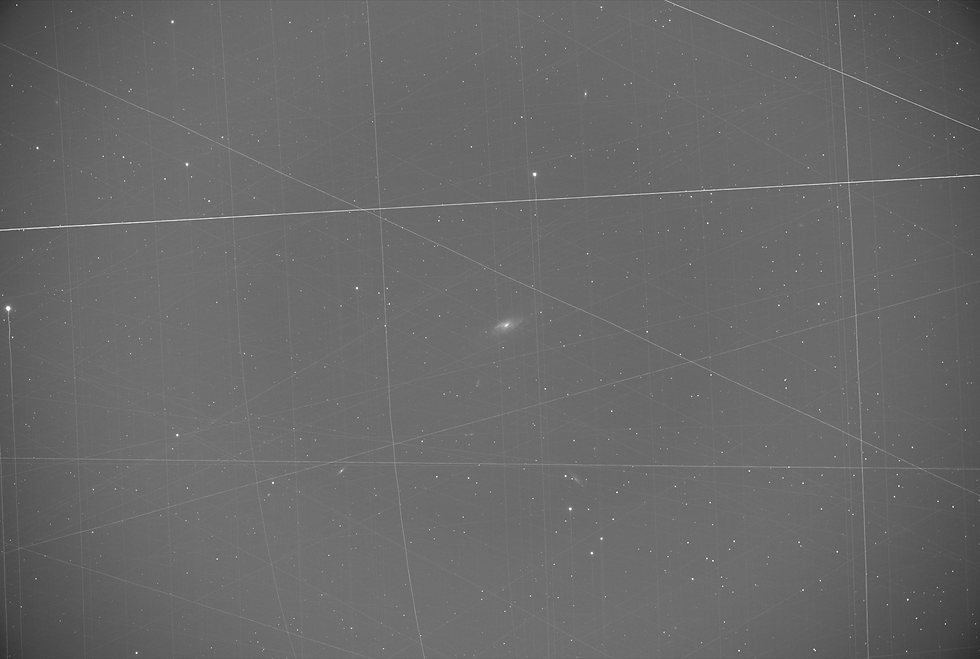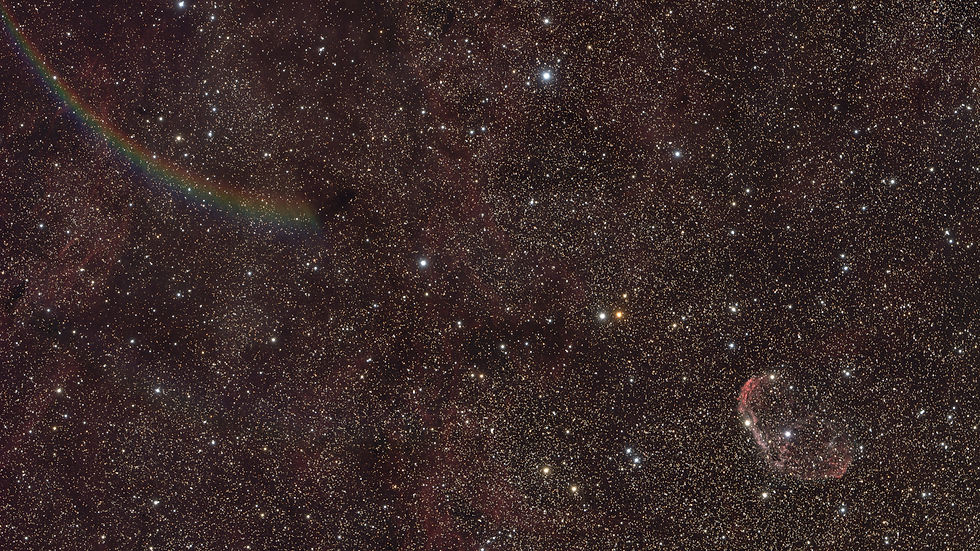I’m dedicating a blog entry to failures. Not just any failure… I’d need a whole internet to capture all those.
No, just the interesting failures. Or the oddly attractive ones. Let’s call them “bloopers”.
First up is the black and white image below. This is what the camera saw during a “meridian flip”. The telescope can’t track around a full circle without getting tangled up, so does a “meridian flip” after tracking an object past the meridian. The meridian is a line running from north to south (or vice versa) crossing the zenith. The telescope mount does this automatically (mine at one degree past the meridian). In images collected after the flip the image will be inverted from those before the flip, but the image stacking software handles this without any problems.
I am typically taking one-minute subframes/images and then stacking these. A large fraction are thrown away due to tracking problems, wind, clouds, vibrations, evil spirits and satellites. If a few subframes are lost during a meridian flip it is of no consequence.
In this image we see the Galaxy M106 in the center, then lines running all around. The lines are the star trails as the telescope tracked all over the sky before returning to M106. When I first saw this image I thought it was a massive attack of satellites, but I then noticed that this is the last image with M106 in this orientation and all later images are flipped. Some of the lines are curved which would be impossible for a satellite trail.

The second image is more of a mystery. It includes a fairly wide field of objects including star clusters M38 and NGC1907. I can only guess that I was capturing this image and then decided to jump to another object. I’m impressed by the deep colours, the lines, the sharp stars, and what appear to be galaxies! I couldn’t reproduce this one if I tried!

The next one is a rainbow in the heavens right beside the Crescent Nebula. Alas, the rainbow exists only in my telescope. This problem seems to arise when I’m viewing a dim object and there is a bright star at a certain distance outside the field of view. That light is somehow entering the scope and creating a rainbow. This one seems to be caused by the star Sadr in the constellation Cygnus, magnitude 2.2. I had a similar problem looking at a dim object near the star Rigel. Good shot of the Crescent Nebula though!

Up next is another image of the Crescent Nebula. I pointed the telescope at the Nebula in the early evening before it was very dark. I actually saw the star field within a field of trees, but then the clouds moved in. There was enough light that the clouds were lit up, as captured in this image. I think some of the darker structure on the right is from the trees. There must have been some light pollution as well, to explain the bottom right corner...


Comments